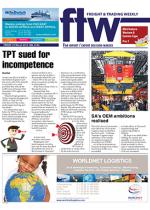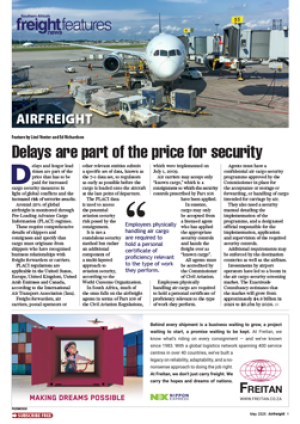Questions have been raised
about the department of trade
and industry’s (dti) efforts
to increase SA export trade
to Russia, at a time when
that country is definitely
very much on its back foot
economically.
It’s all going downhill for
Russia.
Its central bank has just cut
interest rates by 1% to 14%,
highlighting the dire state
of the country’s economy. It
has also slashed its growth
forecast – expecting the
Russian economy to contract
by between 3.5% and 4% in
2015, worse than its January
prediction of 3%.
There is plenty to worry
about. Low oil prices and
Western sanctions crushed
the economy, and the rouble
has plunged 40% against the
dollar in just six months.
Inflation is soaring, having
hit 16.7% in February, with
food prices jumping by 23%
compared to last year. Cutting
rates could push prices even
higher, but leaving them at
elevated levels might mean
an even deeper and longer
recession.
Also, industrial activity and
consumer demand is slowing,
according to the World Bank.
If Russia continues on its
current trajectory “experts
warn that the nation’s
economy could hit a breaking
point as early as the end of
this year”, said CNN Money.
And entering into this
economic mire of despond, the
dti last week led a delegation
of 25 SA business people to
the 6th Investment and Trade
Initiative (ITI) in Moscow and
Novosibirsk.
“This trade mission is an
opportunity to advance SA’s
export and investment agenda
in the sectors of agriculture
and agro-processing and also
food-related products,” said
deputy minister of trade and
industry, Mzwandile Masina.
And, he added, the
immediate opportunities for
SA suppliers to Russia would
be in the increase of fresh
produce exports.
“With an already
established export base of
over US$250m (R2.75bn at
the average exchange rate for
2014) per year for fresh fruits,
especially citrus,” he said,
“SA could easily expand to
fresh vegetables through the
existing export networks.”
Where Masina plucked that
figure from is hard to say,
because fresh fruit exports to
Russia in 2014 only totalled
R1.02bn, according to his own
dti’s trade stats.
And, he added:
“SA’s exports
to Russia are
showing positive
signs, having
grown by 11%
between 2012
and 2013.”
But, once
again, the
government was only telling
the attractive part of the
truth about total SA exports
to Russia. Masina failed to
mention that, again according
to the dti stats, the year-onyear
growth had actually
dropped from 11.03% in 2013
to only 1.46% in 2014.
And Masina was remiss
in not pointing out that
growth had already plunged
from 59.09% in 2012 to that
11.03% in 2013.
Another thing the dti
omitted to mention in its
promotional spiel, according
to Ron Frick, MD of DAL
Agency, was the serious
devaluation of the rouble in
the latter half of 2014 and
during the early part of this
year.
So bad was this that
– amongst the world’s
emerging nations’
currencies – the
rouble has taken
an even bigger
nosedive against
the rampant
dollar these last
few months than
our own poor
old rand. This
meaning SA exports will cost
Russian buyers that much
more in their local currency
than before. It also, of course,
pushed up the freight costs
significantly (always quoted in
US dollars), when paid out in
in roubles.
Also, Frick added, there
was the questionable ability
of the Russian traders to pay
for imports from SA and
elsewhere.
“Therefore, fruit exporters
in SA should be getting very
nervous about whether they
will get paid for the product
they are placing into the
Russian market,” he told
FTW. And he supported this
statement by telling us that
some of the fruit exporters
that use DAL’s reefer capacity
for exports to Russia had
told him they were having
problems getting payment out
of Russia.
SA certainly does have an
advantage on the fruit and
vegetable export side of things.
And that is Russia’s
August 2014 ban on imports
of all European fruit and
vegetables in retaliation for
EU sanctions. They were by
far the biggest buyers, buying
about 21.5% of EU vegetable
exports and 28% of the bloc’s
fruit exports.
And, in the year before
the ban, EU farm exports
(including fruit and
vegetables) to Russia were
worth the equivalent then of
about R145.2 billion.
That may explain, or partly
explain, the 4.4% increase
in SA fresh fruit exports to
Russia in 2014 to R1.022bn.
INSERT
40% The rouble's depreciation
against the dollar in six
months.

